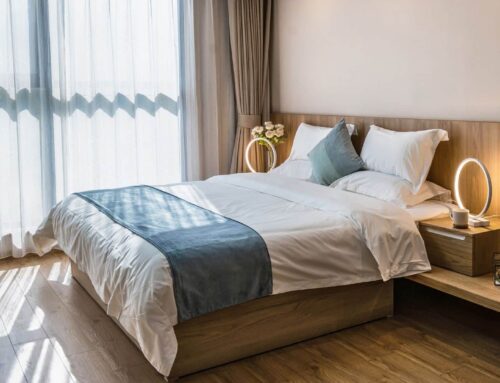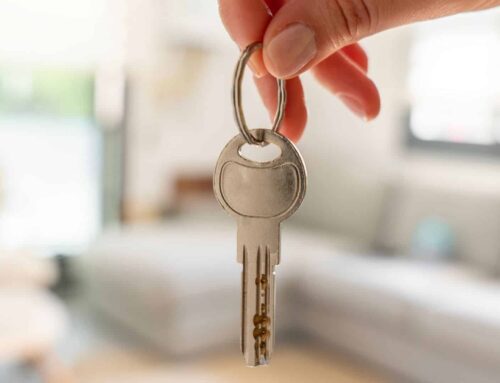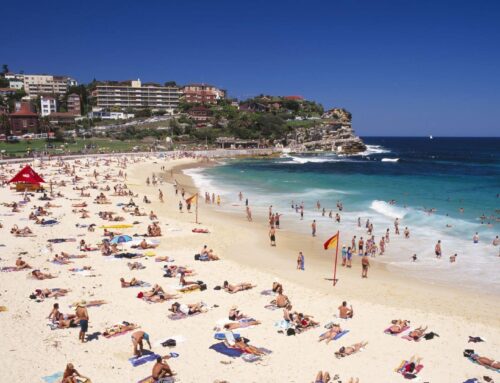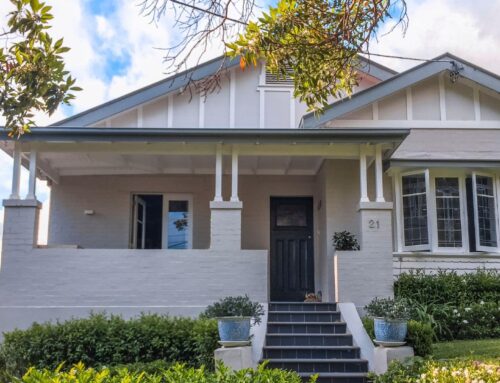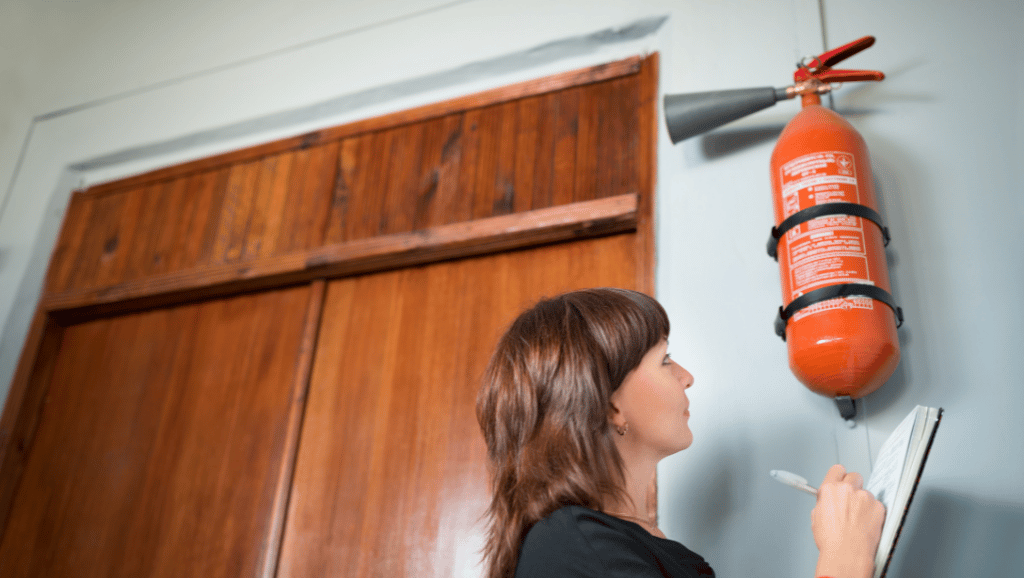
Do you manage or own short-term rental property in North-South Wales?
You’ll need to comply with the new fire safety standards. STRA or short-term rental accommodation could be Airbnb or Stayz.
The NSW government has introduced a state-wide regulatory framework for STRA. It includes a new government-run STRA register and new fire safety standards for short-term rental accommodations. These rules are to take effect on Nov 1, 2021, and are meant to help manage potential adverse impacts and ensure local communities continue to enjoy STRA’s economic benefits.
Read on to learn more about what the requirements are for fire safety and their impact.
What are STRA Compliance Requirements for Fire Safety
Short-term rental dwellings need to comply with the new STRA fire safety standard found in Division 7D of the Environmental Planning and Assessment Regulation.
Under the new law, STRA dwellings need to comply with fire standards. These include:
- Installation of interconnected smoke alarms in property floor levels containing bedrooms and on every corridor.
- Installation of heat alarms in garages beneath houses located above for stand-alone dwellings.
- Every STRA dwelling has an evacuation plan.
- Registration of all STRA dwellings on Government-run STRA register.
What Do They Impact?
The new STRA fire safety standards are meant to reduce risks to guests through early warning, installation of extra safety measures, and educating them on how to respond in case of a fire emergency.
These fire standards apply to any host who rents a private property to the public.
What Class of Buildings are Required to Comply and How Do I Know What My Property is Classed? (1a, 2, 4)
The National Construction Code determines the minimum technical requirements for new buildings and any new building work in existing buildings in Australia. Buildings are grouped according to their use and function.
Each group is then assigned a classification. These classifications are how buildings are referred to throughout the NCC.
Building classifications range from Class 1-Class 10. In addition, you’ll find that specific categories also have sub-classification, commonly denoted with a letter after the number.
Some of the classes of buildings required to comply include:
- Class 1a buildings
Class 1 buildings are single standalone dwellings that can be of residential or domestic nature. In some cases, the buildings are horizontally attached to other Class 1 buildings known as row houses, duplexes, terrace houses, and townhouses.
Class 1 classification is divided into two, mainly Class 1a and Class 1b.
Class 1a compromises a single dwelling, which can be a group of attached dwellings in a townhouse or a single property like a detached house.
- Class 2 Building
Class 2 building consists of multi-unit buildings, typically residential apartments.
According to NCC, the space categorized as an apartment is considered as an SOU or sole-occupancy unit.
Single-story attached buildings could also be categorized under Class 2 if they share with a common area below. A good example is two buildings that share one car park or basement.
- Class 4 Building
A class 4 building is a sole residence or dwelling within a property of a non-residential nature. A good example is the housekeeper’s residence.
It’s essential to note that Class 4 can be located in Class 5-9 building.
HomeHost assists owners in correctly classifying their property and implementation of the necessary fire standards for each classification outlined below. If you are not already a HomeHost customer, talk with us about managing your property. Call us on 0489 270 236.
What Are the Requirements For My Property After Knowing My Building Class?
After understanding which class your building falls under, you now need to know the requirements to meet the new NSW fire safety standards.
Some of the requirements include:
- Smoke and Heat Alarms
Under the new standards, smoke and heat alarms must interconnect if more than one is in the dwelling. The smoke alarms are to use transmitted light, scattered light, or ionized.
- Fire Extinguishers and Fire Blankets
Fire Extinguishers and blankets need to be functional and reliable in a fire to meet Australian standards.
- Evacuation Diagrams
The classified buildings should have evacuation diagrams to meet regulatory requirements as indicated in AS 3745-2010.
- Egress Doors
Under the new regulations, the entrance doorway needs to open from the inside without a key. Any lock modification should not impair the door’s resistance.
Requirements Under Each Classification
Under the new short-term rental accommodation law, places used for short-term letting must comply with STRA fire safety standards.
Below are some of the requirements under each NCC classification.
Class 1a
- Evacuation Diagrams
- Smoke and Heat Alarm
Class 2
- Evacuation Diagrams
- Smoke and Heat Alarms
- Egress Doors
- Fire Blankets
- Portable Fire Extinguishers
Class 4
- Evacuation Diagrams
- Smoke and Heat Alarms
- Egress Doors
- Fire Blankets
- Portable Fire Extinguishers
Process of Registering Your Property
If you are a HomeHost customer we will help you with implementation of these new fire safety standards for your home or rental investment property and registration.
STRA register is a new NSW government-run register introduced to ensure compliance with the latest fire safety standards.
Upon registration, the registrant or host needs to agree to a disclaimer to confirm obtaining the owner’s consent and that the short-term rental accommodation meets the fire safety standards.
Additionally, the register shows the number of days a dwelling is used for STRA. The information is then integrated with booking platforms like Airbnb and Stayz. That allows for enhanced monitoring of the day limits.
Note that NSW Government has extended the deadline to meet the requirements to 1st March 2022. Nonetheless, your property needs to be registered by 1st November, even if it doesn’t meet the set requirements.
Some of the steps you need to follow to register your property include:
- Determine Your Class of Building – Check the category your STRA dwelling falls under. It could be under Class 1a, 2, or 4.
- Meet the Building Requirements – Once you’ve determined your property’s class category, you need to meet the set requirements. You don’t have to worry about installing smoke/heat alarms or getting accurate evacuation diagrams. Contact us today as we have everything you need to meet STRA’s fire safety standards requirements.
- Register at STRA Register – As an STRA owner or manager, you need to register the short-term rental accommodation on NSW Government’s STRA register and meet the new fire safety standards. You’ll need to pay a $65 registration fee for the first 12 months and renew the registration annually for $25.
- Note the PID-STRA Registration Number – After completing your STRA registration, you’ll be issued with an STRA PID or property ID number. Your STRA HomeHost or manager records the number, and it must be displayed on online property listings.
- Upon registrations, hosts need to adhere to the set fire safety standards.
HomeHost works with property owners it manages to ensure they meet the new regulations. Talk with HomeHost about managing your property. Call us on 0489 270 236.

